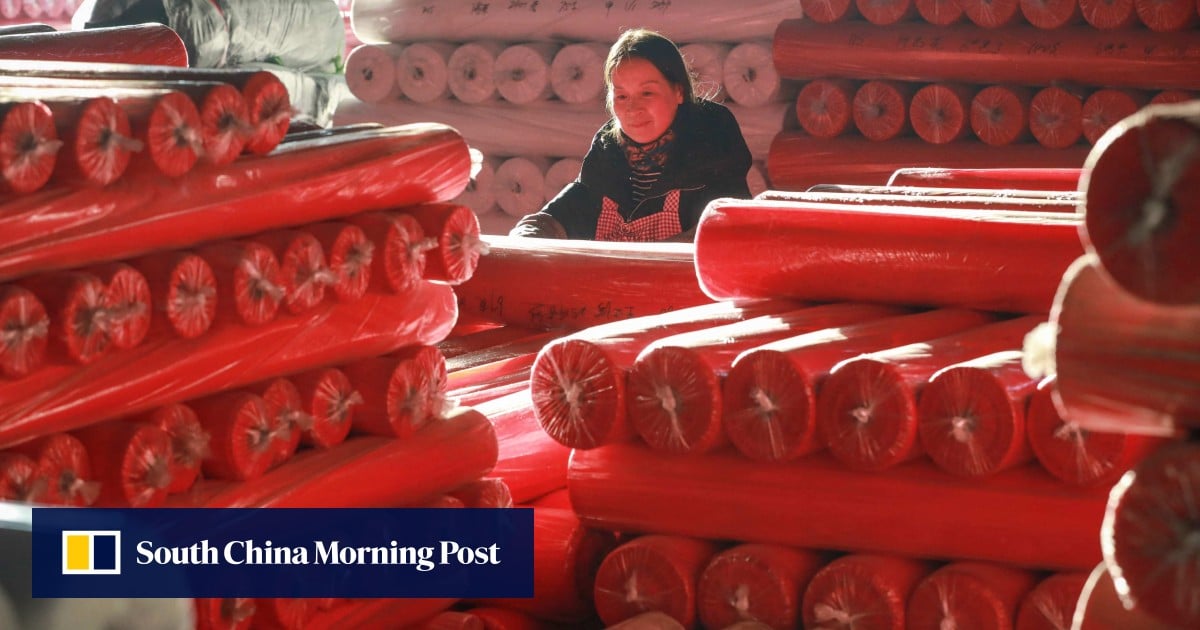“The rise in the manufacturing index was driven primarily by increases in the components of output. Analysts at Capital Economics believe that the components of total new orders and export orders also increased, but by a small margin. “It remains below 50, which is consistent with softening demand and declining exports.”
In the manufacturing PMI, the new export orders sub-index in January increased by 1.4 points from the previous month, and the production sub-index increased by 1.1 points to 51.3 in January.
The new orders sub-index measured 49, up 0.3 points from the previous month, indicating a slight improvement in demand.
China’s manufacturing PMI statistics have declined for five consecutive months since April last year, and although they briefly expanded in September, they began to contract again in October.
Economic momentum continues to slow as deflationary pressures persist
And January statistics show that sentiment in the manufacturing industry has cooled due to weak demand, while the real estate sector, a pillar of the economy that spans many industries, remains sluggish and that the Chinese government remains committed to strengthening the economic recovery. suggests that it is necessary to do so.
External complications such as a prolonged local government debt crisis and a decline in orders from overseas are also adding to the headwinds, and the Chinese government is expected to set a growth target of around 5% this year again, aiming to boost the economy. further measures are required.
However, many small and medium-sized enterprises in China continued to struggle early this year, with profitability improvements and prospects lagging behind their larger peers.
The PMI index for small and medium-sized enterprises was 48.9, up slightly from 48.7 in December, but the index for small and medium-sized enterprises fell to 47.2.
China’s vice prime minister requests support for listed companies to stabilize stock market
China’s vice prime minister requests support for listed companies to stabilize stock market
In contrast, more than 70% of major manufacturers had operating rates above 80%, allowing them to quickly free up production capacity.
Some major sub-indices are also showing a gloomy picture, with the seasonally adjusted production and operating activity expectations index declining from 54 in January and 55.9 in December.
The manufacturing employment sub-index was 47.6, down 0.3 points from December, indicating that employment and the labor market remain weak and companies are struggling to maintain employee salaries.
The non-manufacturing PMI, which indicates business confidence in the service and construction sectors, continued to improve in January, rising from 50.4 in December to 50.7.
[The PMI figures] Evidence that China’s growth momentum is in the midst of a new recovery
However, the seasonally adjusted business activity sub-index for the construction sector was 53.9 in January, down from 56.9 in December, indicating continued negative sentiment in China’s real estate sector.
“Overall, the PMI data shows that China’s economy is relatively weak as confidence remains weak,” said Lin Song, ING’s chief economist for Greater China. economic momentum is likely to remain sluggish until the economy returns to expansion.
“Employment continues to contract in both manufacturing and non-manufacturing surveys, indicating that the job market remains weak, which will continue to be a headwind to consumption.”
The slump in China’s economy and slumping stock prices are sounding the alarm, asking, “Where do we go from here?”
The slump in China’s economy and slumping stock prices are sounding the alarm, asking, “Where do we go from here?”
“Thanks to policy support, we believe growth will recover further in the short term. However, current stimulus does not address the economy’s structural problems and will continue to weigh on growth in the medium term.” ” added Capital Economics analysts.
“[The PMI figures] This confirms that China’s growth momentum is in the midst of a new recovery, but its foundations remain unstable and are unlikely to be sustained if current policy support is reduced. . ”
